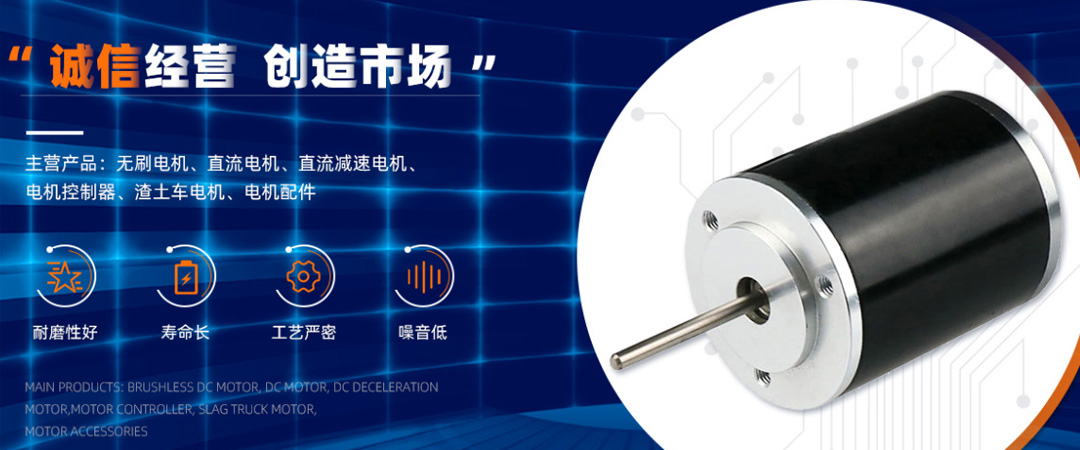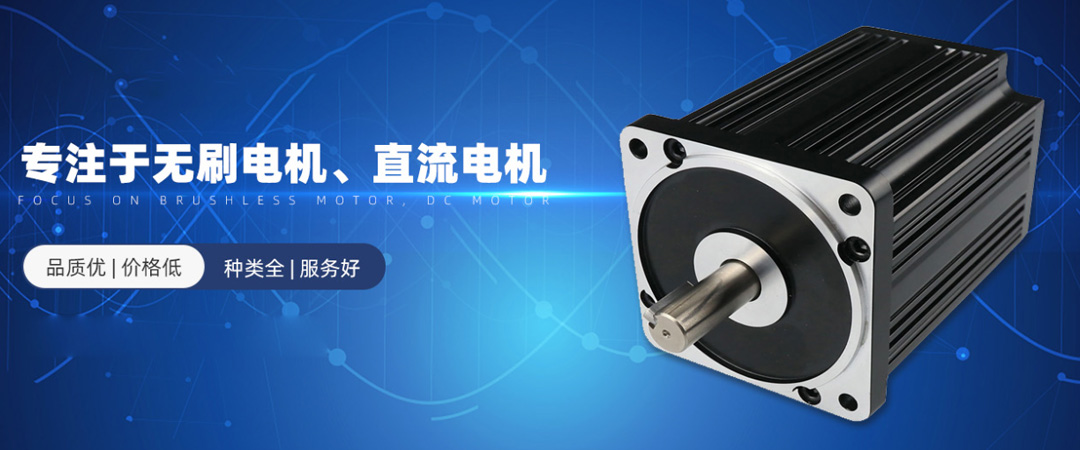Control principle of brushless motor
The control principle of brushless motors is mainly based on the interaction between electronics and magnetic fields. Through accurate control of the stator winding by the driver, electronic commutation and effective energy conversion are achieved. The following is a detailed explanation of the principle of brushless motor control:
1、 Basic components of brushless motor
Brushless motors are mainly composed of three parts: stator, rotor, and driver.
There are three-phase windings wound around the stator, which are symmetrically distributed and usually made of magnetic materials such as silicon steel sheets to improve the efficiency of magnetic field conduction. When a specific sequence of currents is applied to the three-phase winding, a rotating magnetic field is generated inside the stator.
2. The rotor is a permanent magnet, usually made of high-performance permanent magnet materials such as neodymium iron boron. The magnetic field generated by the permanent magnet interacts with the rotating magnetic field generated by the stator winding, causing the rotor to rotate under torque.
3. The driver is composed of power electronic devices and integrated circuits, and is responsible for receiving the start, stop, and brake signals of the motor, as well as position sensor signals and forward and reverse rotation signals, in order to control the on/off of each power transistor of the inverter bridge and generate continuous torque. At the same time, the driver is also responsible for receiving speed commands and speed feedback signals to control and adjust the speed.
2、 Control principle of brushless motor
1. Position detection: Brushless motors usually use position detection components such as Hall sensors to detect the position information of the rotor. These sensors are installed at specific locations on the brushless motor and can sense changes in the rotor magnetic field. When the rotor rotates, the sensor will provide real-time feedback on the position information of the rotor to the driver.
2. Electronic commutation: Brushless motors do not have brushes or commutators, but instead achieve electronic commutation through drivers. When the position of the rotor changes, the driver will adjust the energizing sequence of the stator winding in a timely manner, so that the stator magnetic field always maintains a certain angle difference with the rotor magnetic field, thereby generating continuous torque to drive the rotor to rotate.
3. Current control: By accurately controlling the magnitude and on-off time of the current, the driver can control the strength and rotation speed of the stator magnetic field, thereby achieving control over the speed and torque of the brushless motor.
In summary, the control principle of brushless motors is based on the interaction between electrons and magnetic fields, and achieves electronic commutation and effective energy conversion through accurate control of the stator winding by the driver. This principle enables brushless motors to have advantages such as high efficiency, high reliability, and low noise, and has been widely used in fields such as robots, drones, electric vehicles, and power tools.
1、 Basic components of brushless motor
Brushless motors are mainly composed of three parts: stator, rotor, and driver.
There are three-phase windings wound around the stator, which are symmetrically distributed and usually made of magnetic materials such as silicon steel sheets to improve the efficiency of magnetic field conduction. When a specific sequence of currents is applied to the three-phase winding, a rotating magnetic field is generated inside the stator.
2. The rotor is a permanent magnet, usually made of high-performance permanent magnet materials such as neodymium iron boron. The magnetic field generated by the permanent magnet interacts with the rotating magnetic field generated by the stator winding, causing the rotor to rotate under torque.
3. The driver is composed of power electronic devices and integrated circuits, and is responsible for receiving the start, stop, and brake signals of the motor, as well as position sensor signals and forward and reverse rotation signals, in order to control the on/off of each power transistor of the inverter bridge and generate continuous torque. At the same time, the driver is also responsible for receiving speed commands and speed feedback signals to control and adjust the speed.
2、 Control principle of brushless motor
1. Position detection: Brushless motors usually use position detection components such as Hall sensors to detect the position information of the rotor. These sensors are installed at specific locations on the brushless motor and can sense changes in the rotor magnetic field. When the rotor rotates, the sensor will provide real-time feedback on the position information of the rotor to the driver.
2. Electronic commutation: Brushless motors do not have brushes or commutators, but instead achieve electronic commutation through drivers. When the position of the rotor changes, the driver will adjust the energizing sequence of the stator winding in a timely manner, so that the stator magnetic field always maintains a certain angle difference with the rotor magnetic field, thereby generating continuous torque to drive the rotor to rotate.
3. Current control: By accurately controlling the magnitude and on-off time of the current, the driver can control the strength and rotation speed of the stator magnetic field, thereby achieving control over the speed and torque of the brushless motor.
In summary, the control principle of brushless motors is based on the interaction between electrons and magnetic fields, and achieves electronic commutation and effective energy conversion through accurate control of the stator winding by the driver. This principle enables brushless motors to have advantages such as high efficiency, high reliability, and low noise, and has been widely used in fields such as robots, drones, electric vehicles, and power tools.



